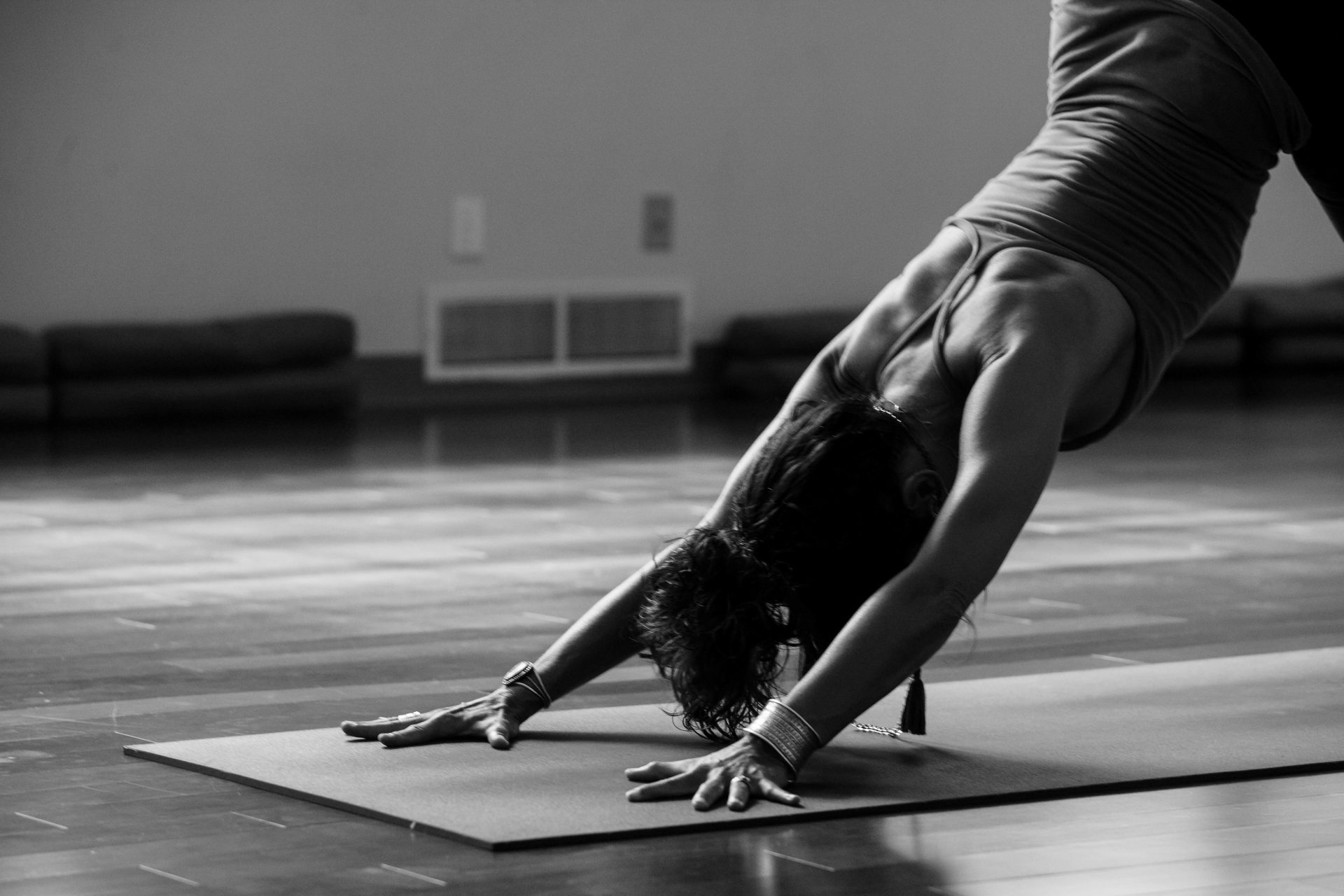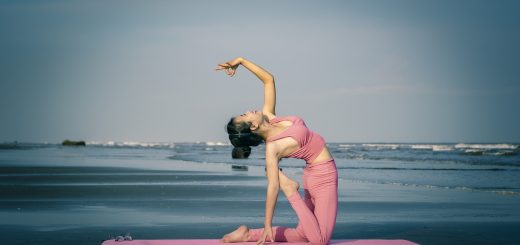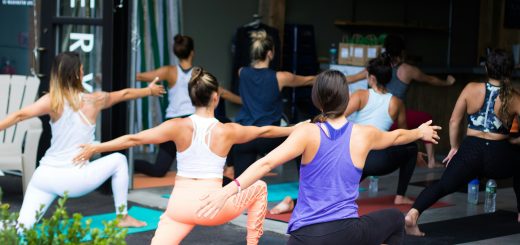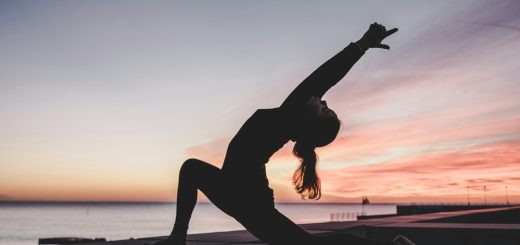Vinyasa: Creative Sequencing for Flow

Hey there, amazing readers! 🖐️ Just a quick note: yes, we know there are a lot of ads here. Trust us, we get it—it’s not the prettiest look, but they help us keep this blog alive and kicking. Those pesky little ads cover the costs of all the behind-the-scenes magic, from hosting and tech stuff to creating content we hope you’ll love.
We’re committed to delivering quality posts, and your support (even just sticking around despite the ads) means everything to us. So, bear with us, and thanks for helping us keep the good vibes rolling. Now, on to the fun stuff! 😉
TRANSLATE BUTTON AT THE END OF THE ARTICLE
A Quick Overview
Vinyasa yoga is a dynamic style of yoga that focuses on the coordination of breath and movement.
It is characterized by flowing sequences of poses that are seamlessly linked together.
In Vinyasa yoga, the transitions between poses are as important as the poses themselves, creating a continuous flow of movement.
Creative sequencing is at the heart of Vinyasa practice, allowing for endless possibilities in designing unique and engaging yoga sequences.
By understanding the principles of Vinyasa sequencing and incorporating breath with movement, practitioners can create fluid and balanced sequences that enhance the mind-body connection.
In this article, we will explore the art of creative sequencing for flow in Vinyasa yoga.
Introduction to Vinyasa Yoga
Vinyasa yoga is a popular style of yoga that emphasizes the connection between breath and movement.
It is often referred to as "flow" yoga because of the smooth transitions between poses.
In a Vinyasa class, students move through a series of poses, linking each movement with a breath.
This constant flow of movement creates a dynamic and energizing practice that helps to build strength, flexibility, and mindfulness.
Understanding Flow in Vinyasa
Flow is the essence of Vinyasa yoga, as poses are linked together in a seamless sequence.
The continuous movement in Vinyasa helps to build heat in the body, promoting detoxification and improving circulation.
Flowing from one pose to the next also helps to create a sense of meditation in motion, allowing practitioners to focus their minds and cultivate a sense of presence on the mat.
The fluidity of movement in Vinyasa yoga encourages practitioners to move with grace and awareness, connecting breath with each motion.
Benefits of Creative Sequencing
Creative sequencing in Vinyasa yoga offers a myriad of benefits for practitioners.
By designing unique sequences, instructors can keep their classes engaging and fresh, preventing boredom and monotony.
Creative sequencing also allows for a customizable practice tailored to the needs and abilities of students.
It challenges practitioners to explore new movements and transitions, fostering growth and development in their yoga practice.
Additionally, creative sequencing can help to target specific areas of the body, providing a well-rounded and balanced practice.
Principles of Vinyasa Sequencing
When crafting Vinyasa sequences, there are some key principles to keep in mind.
These include:
Breath awareness: Syncing movement with breath is essential in Vinyasa yoga.
Balanced sequencing: Ensure a mix of poses that target different parts of the body.
Transitions: Pay attention to the smoothness and fluidity of transitions between poses.
Intention setting: Every sequence should have a clear intention or focus.
Variety: Incorporate a variety of poses to keep the practice interesting and challenging.
By following these principles, instructors can create effective and engaging Vinyasa sequences.
Building a Balanced Vinyasa Flow
A well-balanced Vinyasa flow sequence typically starts with a gentle warm-up to prepare the body for more intense movements.
This may include some gentle stretches and breathing exercises.
The sequence then progresses to a series of standing poses, which help to build strength and stability.
From there, practitioners may move into more challenging poses such as inversions or backbends.
The sequence ends with a cool-down phase, including seated stretches and relaxation poses to help calm the body and mind.
Exploring Different Pose Transitions
Pose transitions are crucial in Vinyasa yoga as they create a seamless flow between poses.
Some common pose transitions include:
Chaturanga to upward-facing dog: A classic transition that strengthens the arms and core.
Warrior II to side angle pose: A smooth transition that opens the hips and stretches the side body.
Downward-facing dog to low lunge: A dynamic transition that helps to build strength and flexibility in the legs.
By exploring different pose transitions, practitioners can add variety and creativity to their Vinyasa sequences.
Incorporating Breath with Movement
Breath is the foundation of Vinyasa yoga, and syncing breath with movement is key to a successful practice.
In Vinyasa, each movement is linked to either an inhale or an exhale, creating a rhythmic flow of breath and movement.
By focusing on the breath, practitioners can deepen their practice, improve their concentration, and cultivate mindfulness on the mat.
Incorporating breath with movement also helps to regulate the body’s energy and create a sense of calm and balance.
Modifying Sequences for All Levels
In Vinyasa yoga, sequences can be modified to suit practitioners of all levels.
By offering variations and options for different poses, instructors can cater to the needs and abilities of each student.
For beginners, modifications may include using props for support or taking a gentler approach to challenging poses.
Advanced students may be offered more challenging variations or transitions to deepen their practice.
By modifying sequences for all levels, instructors can ensure that everyone feels included and supported in their practice.
Creating Fluidity in Vinyasa Practice
Creating fluidity in Vinyasa practice involves moving with ease and grace between poses.
Practitioners should focus on smooth transitions, avoiding jerky movements or abrupt changes in direction.
By maintaining a sense of fluidity in their practice, practitioners can cultivate a sense of flow and connection between mind and body.
This fluidity allows for a more seamless and enjoyable practice, enhancing the overall experience on the mat.
Enhancing Mind-Body Connection
Vinyasa yoga is a practice that encourages a deep connection between mind and body.
By moving with intention and awareness, practitioners can cultivate a sense of mindfulness and presence on the mat.
The continuous flow of movement in Vinyasa helps to quiet the mind and bring attention to the present moment.
Through breath awareness and focused movement, practitioners can enhance their mind-body connection, promoting a sense of balance and harmony within themselves.
Importance of Intention in Sequencing
Setting an intention for each Vinyasa sequence is crucial in creating a meaningful and purposeful practice.
An intention can help to guide the flow of the sequence, providing focus and direction for both the instructor and the students.
Whether it’s to build strength, cultivate gratitude, or find inner peace, having a clear intention can enhance the significance of the practice.
By infusing each sequence with intention, instructors can create a more meaningful and transformative experience for their students.
Tips for Crafting Dynamic Vinyasa Sequences
Crafting dynamic Vinyasa sequences requires creativity, intention, and skill.
Here are some tips for instructors looking to enhance their sequencing:
Start with a theme: Choose a central theme or intention for the sequence to guide your sequencing process.
Mix up poses: Include a variety of poses that target different areas of the body and offer a well-rounded practice.
Focus on transitions: Pay attention to the transitions between poses, ensuring they are smooth and fluid.
Offer modifications: Provide options for different levels of practitioners to make the sequence accessible to all.
Use music: Consider incorporating music into your sequences to enhance the flow and create an immersive experience for students.
By incorporating these tips into their sequencing process, instructors can craft dynamic and engaging Vinyasa sequences that inspire and challenge their students.
Conclusion
Creative sequencing is at the heart of Vinyasa yoga, allowing practitioners to explore endless possibilities in their practice.
By understanding the principles of Vinyasa sequencing, incorporating breath with movement, and setting clear intentions, instructors can create fluid and balanced sequences that enhance the mind-body connection.
By exploring different pose transitions, offering modifications for all levels, and focusing on creating fluidity in their practice, practitioners can cultivate a dynamic and engaging Vinyasa practice.
With creativity, intention, and mindfulness, Vinyasa yoga becomes a transformative and enriching experience for both instructors and students alike.

The Enlightenment Journey is a remarkable collection of writings authored by a distinguished group of experts in the fields of spirituality, new age, and esoteric knowledge.
This anthology features a diverse assembly of well-experienced authors who bring their profound insights and credible perspectives to the forefront.
Each contributor possesses a wealth of knowledge and wisdom, making them authorities in their respective domains.
Together, they offer readers a transformative journey into the realms of spiritual growth, self-discovery, and esoteric enlightenment.
The Enlightenment Journey is a testament to the collective expertise of these luminaries, providing readers with a rich tapestry of ideas and information to illuminate their spiritual path.
Our Diverse Expertise 🌟
While our primary focus is on spirituality and esotericism, we are equally passionate about exploring a wide range of other topics and niches 🌍📚. Our experienced team is dedicated to delivering high-quality, informative content across various subjects ✨.
To ensure we provide the most accurate and valuable insights, we collaborate with trusted experts in their respective domains 🧑🏫👩🏫. This allows us to offer well-rounded perspectives and knowledge to our readers.
Our blog originally focused on spirituality and metaphysics, but we’ve since expanded to cover a wide range of niches. Don’t worry—we continue to publish a lot of articles on spirituality! Frequently visit our blog to explore our diverse content and stay tuned for more insightful reads.





















